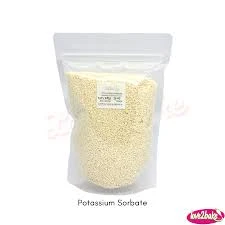
preservatives in processed foods
The Role of Preservatives in Processed Foods
In today's fast-paced world, processed foods have become a staple in many diets. Convenience, extended shelf life, and availability make these foods appealing to consumers. However, the presence of preservatives in processed foods often raises concerns. What are these preservatives, why are they used, and what impact do they have on our health?
Preservatives are substances added to food products to prevent spoilage caused by microorganisms, such as bacteria, molds, and yeasts. They are also used to inhibit chemical reactions that may lead to rancidity or discoloration, thereby maintaining the food's flavor and nutritional quality. The use of preservatives dates back thousands of years, with methods such as salting, smoking, and drying being some of the earliest forms of food preservation. In modern times, synthetic preservatives like sodium benzoate, potassium sorbate, and sulfur dioxide have become common in processed foods.
There are two main types of preservatives natural and synthetic. Natural preservatives, such as vinegar, salt, and certain herbs, have been utilized for centuries and are generally considered safe. On the other hand, synthetic preservatives, although effective in preventing spoilage, can come with a set of health concerns. There is ongoing debate among health experts and consumers about the safety of these chemicals. Some studies have suggested potential links between certain synthetic preservatives and health issues such as allergies, hyperactivity in children, and even cancer. For example, the consumption of foods containing nitrates and nitrites has been associated with an increased risk of colorectal cancer.
preservatives in processed foods

Consumers are becoming increasingly aware of the ingredients in their food. This awareness has led to a demand for cleaner labels, which are free from artificial preservatives. Brands have responded by reformulating their products to use natural preservatives instead. This shift not only meets consumer demand but also enhances the perception of food quality. However, natural preservatives may not be as effective as their synthetic counterparts. For instance, while vinegar can inhibit the growth of some bacteria, it may not be as effective in preventing spoilage in more complex food products.
The debate surrounding preservatives often centers on the balance between safety and the need for food preservation. Processed foods, particularly those requiring a long shelf life, often rely on preservatives to remain safe for consumption. Without these additives, food waste would likely increase significantly, as many products would spoil quickly. In fact, it is estimated that about one-third of all food produced globally is wasted, and effective preservation methods are crucial in mitigating this issue.
Moreover, the regulatory environments in different regions play a significant role in determining which preservatives are acceptable for use in food products. In the United States, the Food and Drug Administration (FDA) regulates food additives, including preservatives, ensuring they meet safety standards. In contrast, many European countries have stricter regulations and often ban certain additives that are permitted in other regions.
In conclusion, preservatives in processed foods serve an essential function in ensuring safety and extending shelf life, but they are not without controversy. The ongoing dialogue about the use of synthetic versus natural preservatives signifies a growing consumer interest in health and wellness. For now, it is critical for consumers to educate themselves about the ingredients in their food and make informed choices. By doing so, they can strike a balance between enjoying the convenience of processed foods and prioritizing their health. Whether opting for products with natural preservatives or choosing to cook fresh ingredients, the power lies in the hands of the consumer to shape the future of food production.
-
Pure Sodium Dichloroisocyanurate Dihydrate | Powerful DisinfectantNewsAug.29,2025
-
Industrial Chemicals: Quality & Purity for Every IndustryNewsAug.28,2025
-
Nitrile Rubber Honoring Strict Production StandardsNewsAug.22,2025
-
Aspartame Ingredients Honoring Food Safety ValuesNewsAug.22,2025
-
Fertilizer for Balanced Plant NutritionNewsAug.22,2025
-
Cyanide Gold Processing with High Purity AdditivesNewsAug.22,2025
-
Formic Acid in Textile Dyeing ApplicationsNewsAug.22,2025
Hebei Tenger Chemical Technology Co., Ltd. focuses on the chemical industry and is committed to the export service of chemical raw materials.
-

view more DiethanolisopropanolamineIn the ever-growing field of chemical solutions, diethanolisopropanolamine (DEIPA) stands out as a versatile and important compound. Due to its unique chemical structure and properties, DEIPA is of interest to various industries including construction, personal care, and agriculture. -

view more TriisopropanolamineTriisopropanolamine (TIPA) alkanol amine substance, is a kind of alcohol amine compound with amino and alcohol hydroxyl, and because of its molecules contains both amino and hydroxyl. -

view more Tetramethyl Thiuram DisulfideTetramethyl thiuram disulfide, also known as TMTD, is a white to light-yellow powder with a distinct sulfur-like odor. It is soluble in organic solvents such as benzene, acetone, and ethyl acetate, making it highly versatile for use in different formulations. TMTD is known for its excellent vulcanization acceleration properties, which makes it a key ingredient in the production of rubber products. Additionally, it acts as an effective fungicide and bactericide, making it valuable in agricultural applications. Its high purity and stability ensure consistent performance, making it a preferred choice for manufacturers across various industries.





